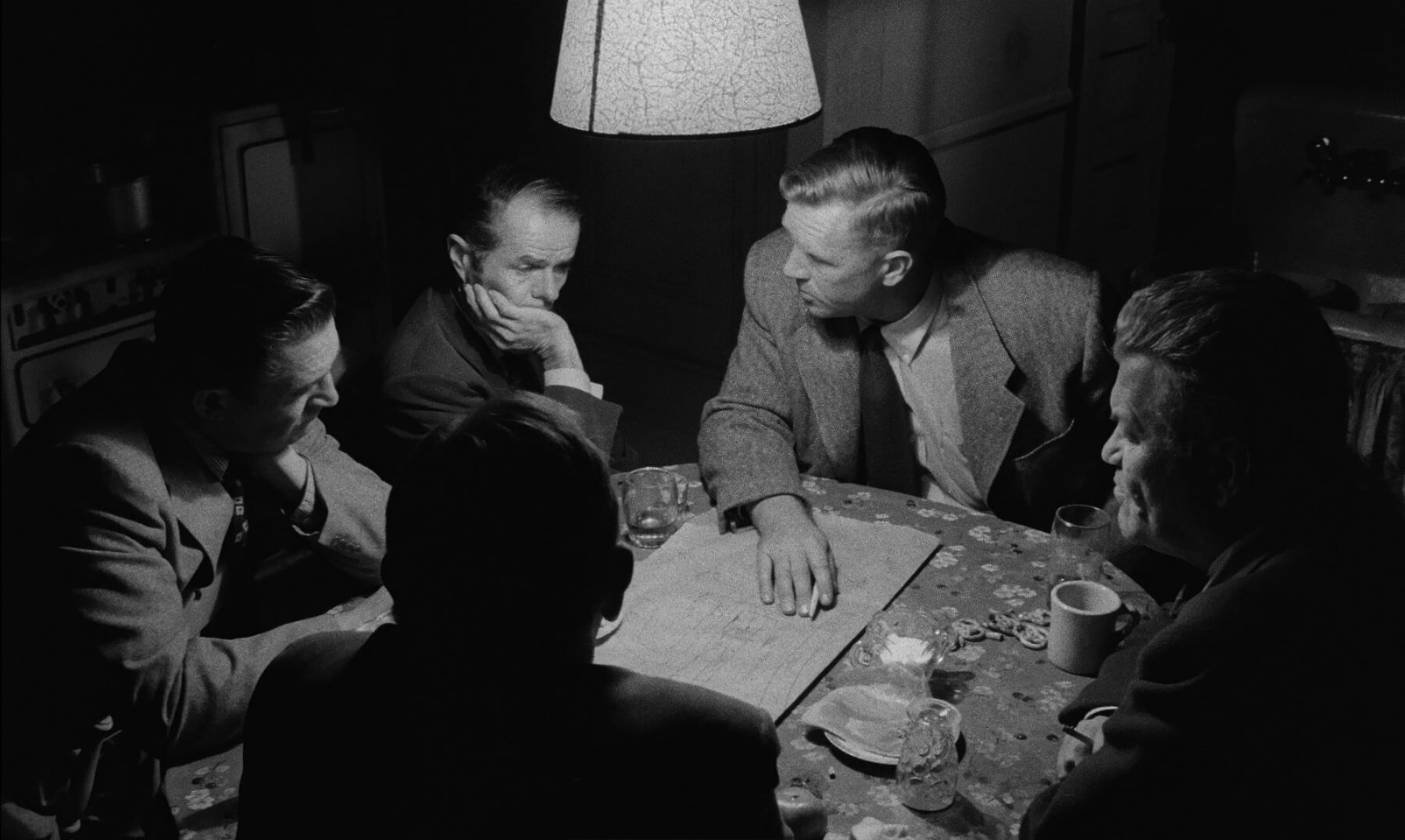The Killing [1956] is an early crime film by legendary film director Stanley Kubrick. It follows a group of men attempting to rob a horse track during a major race.
Bullet-Proof Plan. While the heist genre (or more accurately, heist-gone-wrong) is filled with classics from all over the world, The Killing remains one of the best and stands out sixty years later because of the major components that make up the film: the structure, the characters, and the dialogue. The narrative is non-linear, jumping from one point in time to another, sometimes even going over the same scene more than once to show a different perspective. At the time of the film’s release, this confused and frustrated audiences, even with the inclusion of a narrator. But to a modern audience, the concept is so familiar that it’s hard to imagine finding the presentation confusing. The Killing may not have found its place upon its initial release, but its influence is hard to deny (Quentin Tarantino, Christopher Nolan). Viewing this film today allows an audience to truly appreciate its concepts and execution in a way that only a retrospect allows. Beyond the narrative, there is something more to love here. There is a predictability to the story that doesn’t stem from poor or unoriginal writing. Instead, the impending music and our insight into character motivations create a sense that everything is working toward something big. Like watching cars slide on the ice during a snowstorm; you know disaster is looming in the distance, you just have no way of knowing the damage until it’s all over.
The Usual Suspects. The plot is overall unremarkable but is made much more interesting because of the characters, their motives, their personalities and their language. Each character has their own involvement in the story. With a runtime of only 85 minutes, time is well spent comprehensively setting up the robbery, but great care was taken to ensure that each character is defined, memorable, and most importantly, needed to the story. We meet a long-time criminal, a chess-playing wrestler, a timid cashier, a sharpshooter, a bartender, a crooked cop, a Lady Macbeth of a wife and more, who all have their own unique moments in the film. The plot never becomes convoluted despite attempting to assert the complexity, the detail and the purposefulness of each action. There are no cheap tricks here. The cards are on the table and we know who is who, what’s what, and why. The audience has an advantage over every character by knowing their secrets and carrying them along. The genius behind allowing the audience to know so much up front pays off by still creating surprises and curveballs, something that Stanley Kubrick would later be known for.
Sing Us A Chorus. Jim Thompson provided the dialogue for Kubrick, and his contribution cannot be understated. It is as memorable as any character and enjoyable throughout. The speed of the delivery and the antiquated phrases and slang help preserve the film in its own bubble of time that's incredibly satisfying to experience today. While many films feature the 1940s-gangster-style dialogue, it often feels contrived. However in The Killing, Thompson, and the talented cast of actors, make it all sound very natural and commonplace. Because the audience is distanced from the characters by knowing everything that's going on, the dialogue helps pulls you back in.
Becoming Infamous. Stanley Kubrick has many trademarks, primarily his photography, and this film showcases many of them in their earliest stages. Three-way-conflicts, black humor, and tracking shots following a character are all present here. It will be fresh and familiar to those accustomed to his later work (2001: A Space Odyssey and on). Here we have a Kubrick in his earlier stages, understanding the craft and exploring its potential. Creating a distance between the characters and the audience but simultaneously making us feel comfortable with them, by taking the time to develop them. This is something he would do again and again. The Killing was Kubrick’s first major film and what stands out most, what he carried with him from this film on, was the importance of creating characters complicated enough to have conflicting feelings about. These are people with selfish, violent, and dangerous motives, and we’re lucky to watch their lives play out from a distance. In our understanding of them, we can sympathize, even empathize, and reflect on our own desires. It’s a frustrating reminder that we can never know what will happen, even when we’re positive that we do. And let’s be honest, sometimes knowing what will happen doesn’t make it any less painful when it finally does.
The Killing blends an array of talent and creativity to present a film that is both exciting and enjoyable.

